Praemium Imperiale 2018, here are biographies of all the winners of the world's top art award
As we have already announced, the winners of the 30th Praemium Imperiale, the world’s most important art award, were presented today: they are Pierre Alechinsky for painting, Fujiko Nakaya for sculpture, Riccardo Muti for music, Christian de Portzamparc for architecture, and Catherine Deneuve for theater/cinema. And the 2018 Praemium Imperiale Fellowship went instead to the Shakespeare Schools Foundation. In this article, here are profiles of all the winners.
For Painting: Pierre Alechinsky (Belgium/France). Born in Brussels on October 19, 1927. Lives and works in Bougival, France
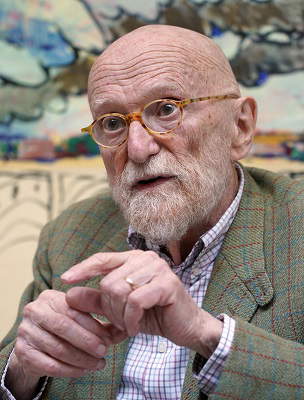 Pierre Alechinsky is an internationally renowned contemporary artist, born in Brussels in 1927. Since 1944 he studied illustration and typographic techniques at the La Cambre school in Brussels. In 1949 he joined the avant-garde art group “CoBrA” (1948-1951), later moving to Paris. He entertained a close relationship with Shiryu Morita, the leader of the calligrapher group Bokubi (Kyoto). He first visited Japan in 1955 and made the film Calligraphie Japonaise. Under the influence of Walasse Ting, whom he met in Paris in 1954, he began using Indian ink and Chinese brushes. In 1965 he began to use acrylic paint in marginalia, on paper arranged over canvas. In 1977 he received the Andrew W. Mellon Prize at the Carnegie Institute in Pittsburg, Pennsylvania, United States. Since the 1950s he has produced a remarkable and extensive output of prints (etchings, lithographs). Countless exhibitions in museums around the world have shown the richness and variety of his work. He recently received French citizenship. In the years 2016-2017, he held his first major retrospective exhibitions in Tokyo and Osaka, intended to commemorate the 150th anniversary of the establishment of diplomatic relations between Belgium and Japan. He is the first Belgian-French citizen awarded the Praemium Imperiale.
Pierre Alechinsky is an internationally renowned contemporary artist, born in Brussels in 1927. Since 1944 he studied illustration and typographic techniques at the La Cambre school in Brussels. In 1949 he joined the avant-garde art group “CoBrA” (1948-1951), later moving to Paris. He entertained a close relationship with Shiryu Morita, the leader of the calligrapher group Bokubi (Kyoto). He first visited Japan in 1955 and made the film Calligraphie Japonaise. Under the influence of Walasse Ting, whom he met in Paris in 1954, he began using Indian ink and Chinese brushes. In 1965 he began to use acrylic paint in marginalia, on paper arranged over canvas. In 1977 he received the Andrew W. Mellon Prize at the Carnegie Institute in Pittsburg, Pennsylvania, United States. Since the 1950s he has produced a remarkable and extensive output of prints (etchings, lithographs). Countless exhibitions in museums around the world have shown the richness and variety of his work. He recently received French citizenship. In the years 2016-2017, he held his first major retrospective exhibitions in Tokyo and Osaka, intended to commemorate the 150th anniversary of the establishment of diplomatic relations between Belgium and Japan. He is the first Belgian-French citizen awarded the Praemium Imperiale.
For Sculpture: Fujiko Nakaya (Japan). Born in Sapporo, Hokkaido, Japan, on May 15, 1933.
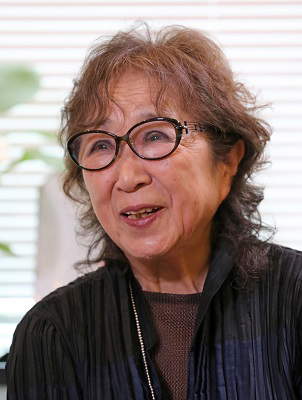 Known worldwide as the “Fog Artist,” Fujiko Nakaya graduated from the School of Art at Northwestern University in Illinois, United States. After making her first paintings, she joined the experimental group E.A.T. in 1966, whose intent was to promote collaboration between art and technology. As part of his work with this group, he presented his first “fog sculpture,” created using artificial fog, in the Pepsi Pavilion during the 1970 Osaka Exposition. Nakaya’s various fog works, installed in more than 80 locations around the world in various forms -- environmental sculptures created using pure water fog, installations, performances -- all function as means of connecting humans and nature. The artist’s interest in the environment was strongly influenced by his father, experimental physicist Ukichiro Nakaya (1900-1962), who created the world’s first artificial snow crystal. In the 1970s he made video works that cast an acute look at society. In 1980 he founded Video Gallery Scan, promoting exchanges with non-Japanese artists and working to discover and support young Japanese video artists. Last year he presented a work made of fog in the new Tate Modern building in London. Next year he will work on other ambitious projects in Japan, the United States and the Netherlands. The first major retrospective of Nakaya’s work will be mounted at the Art Tower Mito in Japan, next October through January 2019.
Known worldwide as the “Fog Artist,” Fujiko Nakaya graduated from the School of Art at Northwestern University in Illinois, United States. After making her first paintings, she joined the experimental group E.A.T. in 1966, whose intent was to promote collaboration between art and technology. As part of his work with this group, he presented his first “fog sculpture,” created using artificial fog, in the Pepsi Pavilion during the 1970 Osaka Exposition. Nakaya’s various fog works, installed in more than 80 locations around the world in various forms -- environmental sculptures created using pure water fog, installations, performances -- all function as means of connecting humans and nature. The artist’s interest in the environment was strongly influenced by his father, experimental physicist Ukichiro Nakaya (1900-1962), who created the world’s first artificial snow crystal. In the 1970s he made video works that cast an acute look at society. In 1980 he founded Video Gallery Scan, promoting exchanges with non-Japanese artists and working to discover and support young Japanese video artists. Last year he presented a work made of fog in the new Tate Modern building in London. Next year he will work on other ambitious projects in Japan, the United States and the Netherlands. The first major retrospective of Nakaya’s work will be mounted at the Art Tower Mito in Japan, next October through January 2019.
For Architecture: Christian de Portzamparc (France). Born in Casablanca, Morocco, on May 9, 1944.
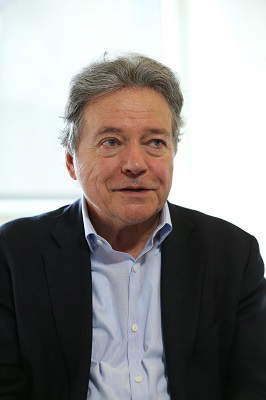 Christian de Portzamparc, architect and urban planner, was the first Frenchman to win, at age 50, the Pritzker Prize for Architecture. His imaginative architectural style is renowned for peculiar characteristics: the boldness of his designs, his artistic approach, and his creativity as a watercolorist. His designs for concert halls and his interventions in urban planning are particularly appreciated. He studied architecture in Paris and New York, and he achieved fame through the creation of the Les Hautes Formes housing complex in Paris and the major project commissioned by President François Mitterrand called the Cité de la Musique (1995), under which concert halls of different sizes, a music museum and many other spaces were planned. Among his most important works are Nexus II (1991), a residential complex in Fukuoka, Japan; the LVMH Tower (1999) and two skyscrapers (2015) in New York; the Philharmonie Luxembourg (2005); the Cidade das Artes (2013), a cultural complex in Rio de Janeiro; and the Paris La Défense Arena (2017), an indoor stadium in Nanterre, just outside Paris. He is currently engaged in large-scale projects, such as in Casablanca for Africa’s largest theater and in China, for the Shanghai Opera House and the Suzhou Cultural Center, scheduled for completion in 2019.
Christian de Portzamparc, architect and urban planner, was the first Frenchman to win, at age 50, the Pritzker Prize for Architecture. His imaginative architectural style is renowned for peculiar characteristics: the boldness of his designs, his artistic approach, and his creativity as a watercolorist. His designs for concert halls and his interventions in urban planning are particularly appreciated. He studied architecture in Paris and New York, and he achieved fame through the creation of the Les Hautes Formes housing complex in Paris and the major project commissioned by President François Mitterrand called the Cité de la Musique (1995), under which concert halls of different sizes, a music museum and many other spaces were planned. Among his most important works are Nexus II (1991), a residential complex in Fukuoka, Japan; the LVMH Tower (1999) and two skyscrapers (2015) in New York; the Philharmonie Luxembourg (2005); the Cidade das Artes (2013), a cultural complex in Rio de Janeiro; and the Paris La Défense Arena (2017), an indoor stadium in Nanterre, just outside Paris. He is currently engaged in large-scale projects, such as in Casablanca for Africa’s largest theater and in China, for the Shanghai Opera House and the Suzhou Cultural Center, scheduled for completion in 2019.
For Music: Riccardo Muti. Born in Naples on July 28, 1941.
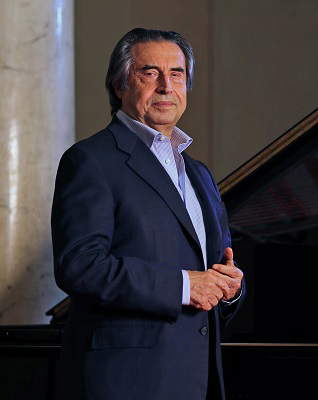 Riccardo Muti studied piano at the San Pietro a Majella Conservatory in Naples and went on to study at the Giuseppe Verdi Conservatory in Milan, where he graduated with honors in composition and conducting. In 1967 the jury of the Milan “Cantelli” Competition unanimously awarded him first place, bringing him to the attention of critics and the public. Among the most eminent conductors of our time, he has conducted the world’s most prestigious orchestras. Earlier in his career he was music director of the Maggio Musicale Fiorentino, the Philharmonia Orchestra of London, the Philadelphia Orchestra and the Teatro alla Scala. He is currently music director of the Chicago Symphony Orchestra. He also maintains a long association with the Vienna Philharmonic and the Salzburg Festival. Throughout his career he has devoted himself to the training of young musicians, founding the Luigi Cherubini Youth Orchestra in 2004, made up of young musicians from all over Italy. More recently, he established the Riccardo Muti Italian Opera Academy for young conductors, collaborating masters and singers, which debuted in 2015. The Academy’s goal is to transmit the Maestro’s experience and teachings and to train young people in Italian Opera. Muti has received countless international awards and more than 20 honorary degrees from Italian and foreign universities. His vast record production, enhanced by the many awards he has received, ranges from the classical symphonic and operatic repertoire to contemporary compositions.
Riccardo Muti studied piano at the San Pietro a Majella Conservatory in Naples and went on to study at the Giuseppe Verdi Conservatory in Milan, where he graduated with honors in composition and conducting. In 1967 the jury of the Milan “Cantelli” Competition unanimously awarded him first place, bringing him to the attention of critics and the public. Among the most eminent conductors of our time, he has conducted the world’s most prestigious orchestras. Earlier in his career he was music director of the Maggio Musicale Fiorentino, the Philharmonia Orchestra of London, the Philadelphia Orchestra and the Teatro alla Scala. He is currently music director of the Chicago Symphony Orchestra. He also maintains a long association with the Vienna Philharmonic and the Salzburg Festival. Throughout his career he has devoted himself to the training of young musicians, founding the Luigi Cherubini Youth Orchestra in 2004, made up of young musicians from all over Italy. More recently, he established the Riccardo Muti Italian Opera Academy for young conductors, collaborating masters and singers, which debuted in 2015. The Academy’s goal is to transmit the Maestro’s experience and teachings and to train young people in Italian Opera. Muti has received countless international awards and more than 20 honorary degrees from Italian and foreign universities. His vast record production, enhanced by the many awards he has received, ranges from the classical symphonic and operatic repertoire to contemporary compositions.
For Theater/Cinema : Catherine Deneuve (France). Born in Paris on October 22, 1943
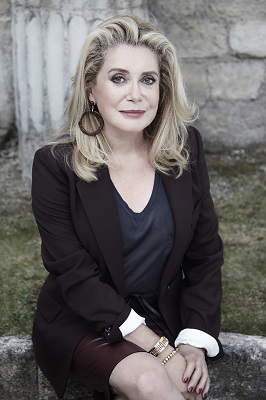 Catherine Deneuve is one of France’s leading actresses. Born in Paris, the daughter of two theater actors, she began her career acting in a few films while attending high school. She conquered the world stage by playing a delightful heroine in Jacques Demy’s musical Les Parapluies de Cherbourg (1964). In more than half a century she has appeared in more than 100 films. Among her major films are Luis Buñuel’s Beautiful by Day(Belle de jour, 1967) and François Ozon’s 8 Women and a Mystery(8 femmes, 2002). She twice received the César Award for Best Actress for her performances in the films The Last Metro(Le Dernier Metro, 1980) by François Truffaut, a leading exponent of the New Wave, and Indochina(Indochine, 1992) by Regis Wagnier. She was awarded the Coppa Volpi for best female performance at the Venice International Film Festival for Place Vendôme (1998). She is also socially engaged. This year she expressed her doubts about the “#MeToo” movement, causing a worldwide stir.
Catherine Deneuve is one of France’s leading actresses. Born in Paris, the daughter of two theater actors, she began her career acting in a few films while attending high school. She conquered the world stage by playing a delightful heroine in Jacques Demy’s musical Les Parapluies de Cherbourg (1964). In more than half a century she has appeared in more than 100 films. Among her major films are Luis Buñuel’s Beautiful by Day(Belle de jour, 1967) and François Ozon’s 8 Women and a Mystery(8 femmes, 2002). She twice received the César Award for Best Actress for her performances in the films The Last Metro(Le Dernier Metro, 1980) by François Truffaut, a leading exponent of the New Wave, and Indochina(Indochine, 1992) by Regis Wagnier. She was awarded the Coppa Volpi for best female performance at the Venice International Film Festival for Place Vendôme (1998). She is also socially engaged. This year she expressed her doubts about the “#MeToo” movement, causing a worldwide stir.
2018 Praemium Imperiale Fellowship for Young Artists: Shakespeare Schools Foundation (UK), Selected by International Praemium Imperial Adviser Christopher Patten (UK)
The Shakespeare Schools Foundation (SSF) is a British charity committed to culture and education. Since 2000, it has organized the Shakespeare Schools Festival, the world’s largest youth theater festival. By enabling young people to engage with the language and timeless stories of William Shakespeare, the Foundation helps them gain the self-esteem and confidence they need to grow and succeed. The Festival, held each fall, involves about 30,000 students between the ages of 7 and 18 from 1,000 schools across the United Kingdom, including pupils from ethnic minorities, or living in poverty, as well as young people with special educational needs. During a two-month period, Shakespeare’s plays, such as Macbeth, Romeo and Juliet, and The Tempest, are staged in abbreviated form in more than 130 professional theaters. Over the past 17 years, more than 250,000 young people have taken part in the Festival throughout the United Kingdom. In 2016, to commemorate the 400th anniversary of William Shakespeare’s death, young people performed at various venues including Westminster Abbey. Some of the most eminent figures in the world of drama, including Sir Tom Stoppard and Dame Judi Dench, were keen to offer their support to the Festival. The organization was granted foundation status in 2016.
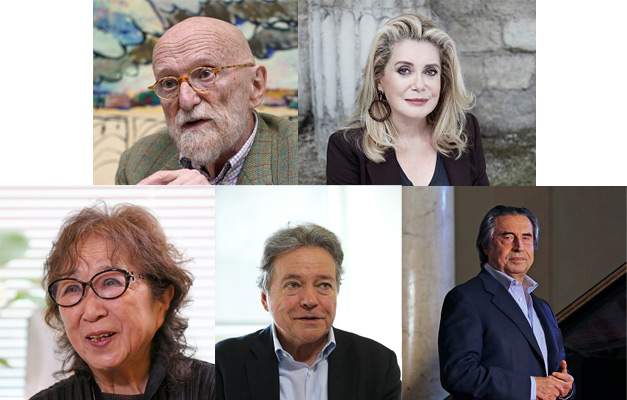 |
| Praemium Imperiale 2018, here are biographies of all the winners of the world's top art award |
Warning: the translation into English of the original Italian article was created using automatic tools. We undertake to review all articles, but we do not guarantee the total absence of inaccuracies in the translation due to the program. You can find the original by clicking on the ITA button. If you find any mistake,please contact us.





























